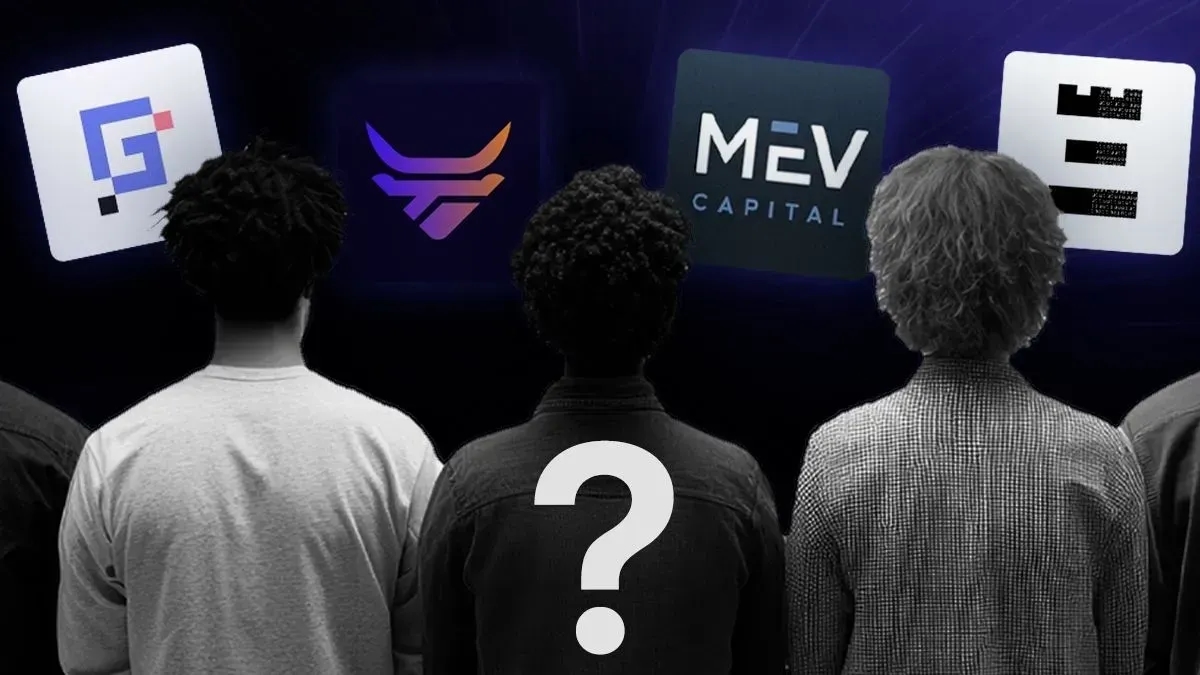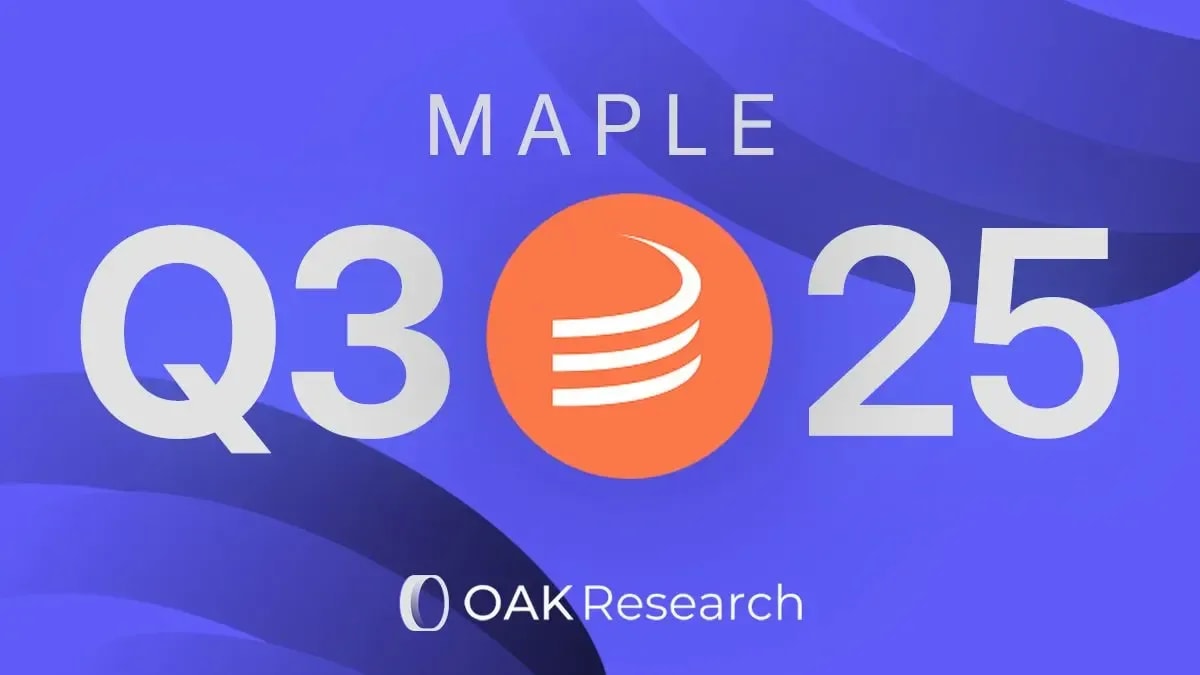Curators: The Guardians of Decentralization in DeFi?
July 15, 2025

In this post
The rise of decentralized finance in 2020 saw the emergence of a new, invisible yet essential role in the functioning of many protocols: the curators. In this article, we explore the role of curators and how they could evolve in the future to become a key pillar in the decentralization of DeFi.
What is a curator in DeFi?
An attempt at a definition
The role of the curator is often misunderstood, or even completely ignored, by most users. Yet behind this rather vague term lie actors who silently shape the dynamics of power, trust, and innovation within DeFi infrastructures.
Because their field of action is so broad, because they can fulfill multiple functions, and because it is still an emerging role whose full scope is yet to be determined, it is difficult to offer a precise definition. We will nonetheless attempt it.
A curator is a trusted intermediary, reinvented in a world that claims not to need one.
The Trust Dilemma
One of the founding principles of Bitcoin, reiterated several times by Satoshi in the whitepaper’s introduction, is precisely the idea of eliminating the need for a trusted intermediary in favor of irrefutable cryptographic proofs.
This principle became a guiding maxim for many subsequent projects, notably Ethereum. However, it is crucial to acknowledge that completely eliminating trust remains, in practice, difficult to achieve, if not impossible.
Certainly, it is possible to do without intermediaries for relatively simple systems such as peer-to-peer payments or some basic smart contracts. However, this ambition quickly encounters the complexity of the real world: conflict resolution, governance, asset management, so many domains where human intervention remains indispensable.
The great illusion of “Web3” has been to suggest that it would be possible to eradicate the need for trusted intermediaries altogether. Let’s be realistic: it is unreasonable to expect everyone to master every aspect of each protocol they use daily.
Nonetheless, this does not mean these ideas are meaningless. On the contrary, DeFi is redefining how we grant our trust by creating an open marketplace where anyone can offer or acquire it. The real revolution of Web3 lies less in the disappearance of trust than in its transformation.
Curators, the new face of trust
In this context, curators take on their full importance: they embody this new form of trust intermediation, whose role is to provide individuals with the keys to facilitate and secure interactions.
Their scope is broad: code audits, governance management, the setting of financial parameters: so many tasks that still require human intervention. But, unlike the monopolistic model of the past, curators operate in an open market, driven by economic incentives that push them to provide quality work at the best price, or risk being replaced.
Returning to our initial definition: curators are reinvented trusted intermediaries, operating in an open space where the abundance of choice requires new filters. They facilitate interactions between users and protocols, acting in turn as facilitators, mediators, or arbitrators.
Overview of curators
Parameter curation
One of the major advances brought by decentralized finance is the automation of transactions according to predefined rules. This is what allows automatic swaps on Uniswap or instant loans on Aave.
However, while some simple protocols like Uniswap v2 or v3 rely entirely on the execution of their smart contracts, this is not the case for more complex protocols, such as lending platforms or those offering perpetual contract trading.
Because they include a liquidity borrowing mechanism, these protocols require the definition of parameters for managing their pools. This notably concerns:
- LTV (Loan-to-Value), that is, the maximum percentage of collateral that can be borrowed;
- The maximum pool size for each asset;
- Which assets are eligible for deposit in the pool;
- The global borrowing limit for the pool;
- The interest rate curve according to the pool’s utilization.
This is a permanent optimization problem-maximizing protocol-generated revenues while managing risk. If parameters are too conservative, the protocol becomes capital-inefficient and generates less revenue than competitors at equal loan volume. Conversely, overly aggressive parameters increase the frequency of liquidations, potentially leading to cascades and the creation of bad debt for the protocol.
The role of the curator in managing pools or vaults is to optimize these parameters to maintain the protocol’s competitiveness while controlling risks. This requires constant monitoring of market developments and close attention to how users interact with the protocol, in order to continuously improve its effectiveness.
On a protocol like Aave, where user deposits also serve as reserves for loans, parameter management is a crucial aspect that is difficult to delegate to a non-expert decentralized governance. Here, curators act as professionals providing their financial management expertise; they are recruited by the protocol, which can revoke their mandate if their service is unsatisfactory.
In contrast, Morpho offers a more open infrastructure, where anyone can participate. Each curator can create their own pool and try to attract users thanks to their management and reputation. This form of curation gives users the freedom to evaluate a curator’s performance and change pools at their discretion.
Governance curation
This form of curation is closely related to the previous one: just as financial parameters of a protocol can be complex for an average user to understand, it is also difficult to fully grasp the stakes involved in governance votes without prior expertise.
Here, curators play a dual role: they receive delegated governance power from other token holders, then express their opinions and use this power in governance votes.
Unlike other forms of curation, governance curation is often carried out by individuals or entities involved in the project, but for whom it is not necessarily their sole activity. Their expertise enables them to offer informed opinions on governance proposals. Often, this form of curation does not involve direct remuneration, but it gives curators significant influence over the protocol.
It is also one of the most liquid curation markets: if a curator fails to demonstrate their added value, delegators can quickly transfer their voting power to another curator.
Treasury management
In the world of DAOs, treasury management is often underestimated. Protocols receive income and accumulate assets in the form of volatile tokens, sometimes their own. At the same time, they must cover infrastructure and development costs.
This is where curators specializing in treasury management come in, in a role similar to that of asset managers. They propose appropriate allocation strategies: which assets to hold, how to optimize returns, how to ensure the safety of funds? They ensure the DAO’s financial viability while maintaining a balance between spending and investment.
Often mandated by governance, they regularly produce reports for the community. Their mission is all the more strategic as it contributes to the long-term independence and financial resilience of the protocol.
Multisig management
Finally, another key role of curators concerns protocol security. Most crypto projects have several critical points that could compromise their proper functioning:
- Proxies, which allow a smart contract to be upgraded by redirecting its execution to a new version; if compromised, an attacker could potentially take full control of the protocol;
- Protocol treasuries, often managed by the team, which can be diverted if private keys are compromised or if a team member acts maliciously;
- Some critical functions are protected by a timelock, with an activation delay during which a multisig can veto a dangerous change.
All these features present risks, especially if controlled by a single person. That is why such critical functions are generally placed under the control of a multisig, composed of team members and reputable external parties, sometimes affiliated with specialized entities.
This type of curation, though invisible on a daily basis, strengthens protocol security against external attacks and also protects the protocol and its users from potential internal abuses.
Revenue models for curators
Curators are new players in the market but currently rely mainly on well-established remuneration models:
- Recurring contracts (monthly or annual) for ongoing missions (e.g., parameter management);
- One-off payments for ad hoc interventions (e.g., code audit);
- Share of protocol revenues (e.g., pool fees on Morpho).
However, other remuneration models specific to web3 have also emerged. For example, the token delegation mechanism for governance is an indirect way to compensate curators, by giving them influence over how protocol resources are allocated.
The low transfer costs inherent in blockchain and the ease of tokenization support the development of new funding methods for curators. In the coming years, we can expect to see innovative payment forms emerge: they will not always involve a direct transfer of assets but may still offer compensation via external benefits, notably linked to control over the governance of an infrastructure.
What future for curation?
As we have seen, there are multiple forms of curation, and we have only explored a part of them here. If we accept the definition that curation corresponds to any form of trust intermediation in web3, it encompasses a wide range of activities.
Its development is therefore closely tied to the evolution of web3 infrastructures, almost all of which require some form of curation to simplify, secure, or organize protocol usage. Some examples illustrate this diversity:
- NFT marketplaces practice curation by selecting featured collections and providing simplified interfaces;
- Gitcoin Passport offers a form of on-chain identity that can be used by other protocols to filter users;
- Dune acts as a meta-curator by providing data sets to its users, who then create dashboards accessible to all.
As web3 adoption progresses, most centralized entities currently managing information and finance could gradually be replaced by curators. Several prospective scenarios can be imagined:
- Social network recommendation algorithms could become open and freely chosen by users;
- Banks could be replaced by curators providing interfaces atop DeFi protocols;
- Centralized marketplaces could become decentralized hubs where trust between buyers and sellers is mediated by curators.
Often, the adoption of cryptocurrencies is approached from a technical perspective, sometimes overlooking the need to make these services truly accessible to the general public. Today, it is mainly tech-savvy individuals who master these tools; tomorrow, the general public will need to be able to use them, provided access is made easier. Here, curation will play a major role: not by developing the technologies themselves, but by making them usable, reliable, and understandable for all.
However, this widespread adoption will not happen without major challenges. Even though curation may sometimes seem to reintroduce a form of centralization, it remains compatible with web3 principles as long as it stays replaceable. To guarantee this balance, it will be essential:
- On the project side: to ensure openness to competition between curators;
- On the user side: to favor open and modular protocols (e.g., Morpho) over more closed solutions (e.g., Aave);
- On the curator side: to develop interoperable standards that make their roles and performance measurable and verifiable by all.
Conclusion
Long overlooked, curation is now emerging as a key function within the web3 ecosystem. It brings clarity, trust, and simplicity to a universe often perceived as complex. If web3 truly aims to reach a broader audience, curators will have an essential role to play-as both guides and guardians of decentralization.




